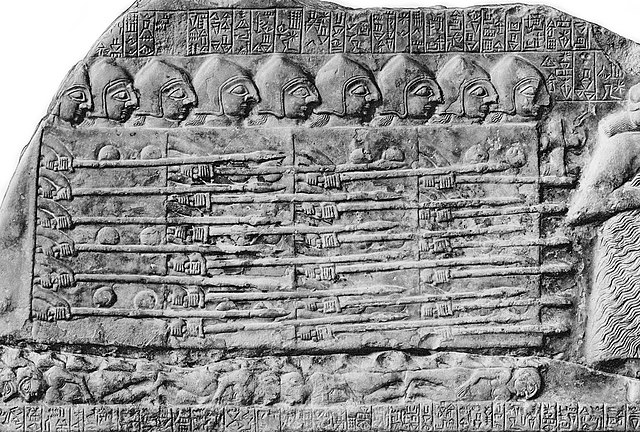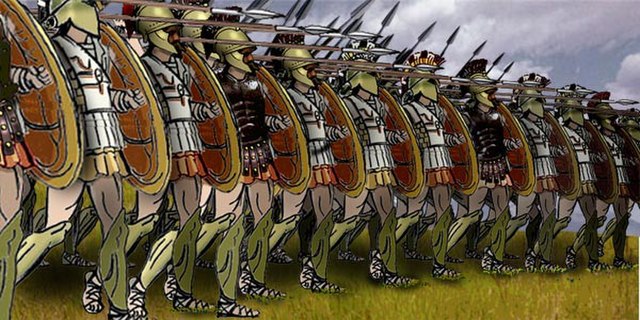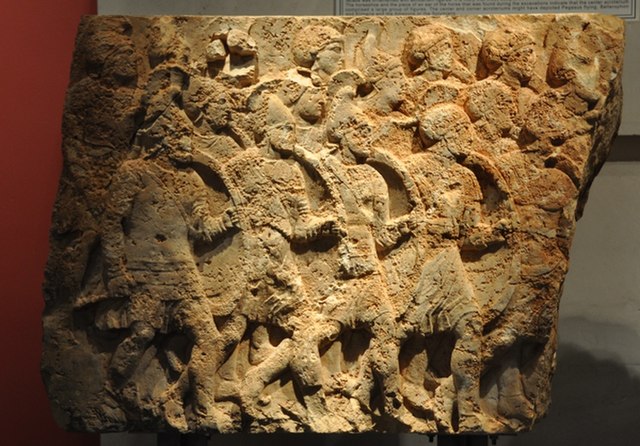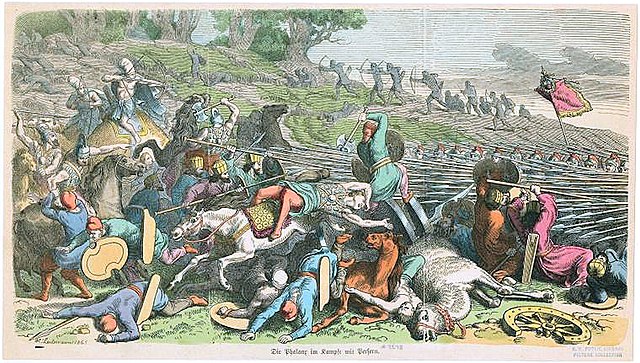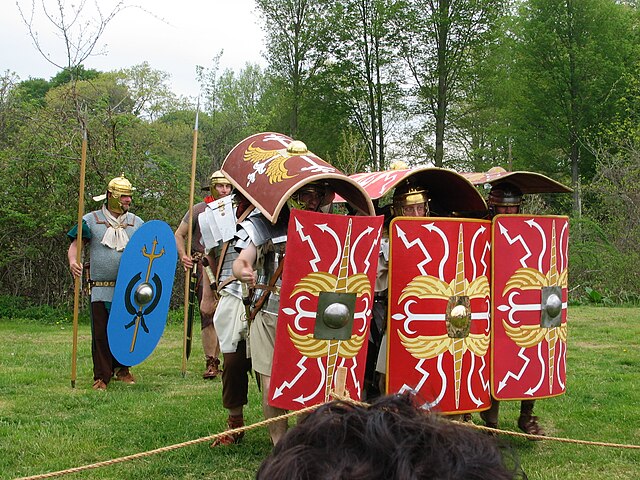The phalanx was a rectangular mass military formation, usually composed entirely of heavy infantry armed with spears, pikes, sarissas, or similar polearms tightly packed together. The term is particularly used to describe the use of this formation in ancient Greek warfare, although the ancient Greek writers used it to also describe any massed infantry formation, regardless of its equipment. Arrian uses the term in his Array against the Alans when he refers to his legions. In Greek texts, the phalanx may be deployed for battle, on the march, or even camped, thus describing the mass of infantry or cavalry that would deploy in line during battle. They marched forward as one entity.
Sumerian phalanx-like formation c. 2400 BC, from detail of the victory stele of King Eannatum of Lagash over Umma, called the Stele of the Vultures
A modern illustration of the Greek hoplites marching in a phalanx formation
Phalanx in a frieze on the tomb of Pericles, Dynast of Lycia (380–360 BC)
Greek phalanx against Achaemenid troops
Heavy infantry consisted of heavily armed and armoured infantrymen who were trained to mount frontal assaults and/or anchor the defensive center of a battle line. This differentiated them from light infantry who are relatively mobile and lightly armoured skirmisher troops intended for screening, scouting, and other tactical roles unsuited to soldiers carrying heavier loads. Heavy infantry typically made use of dense battlefield formations, such as shield wall or phalanx, multiplying their effective weight of arms with force concentration.
Heavy infantry hoplites of Ancient Greece in phalanx formation
Roman re-enactors demonstrate a variant of the Roman testudo formation
Medieval coat of arms of king Matthias Corvinus of Hungary (r. 1458–1490), guarded by Black Army heavy infantry men. Matthias Church, Budapest. The damaged art relic was renovated in 1893.

